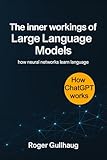
Author(s): Ivo Bernardo

TL;DR: To master LLMs, study machine learning, natural language processing, and deep learning. For a foundational understanding of Large Language Models, study data structures, algorithms, and statistics.
Disclaimer: This post has been created automatically using generative AI. Including DALL-E, Gemini, OpenAI and others. Please take its contents with a grain of salt. For feedback on how we can improve, please email us
Introduction: Unlocking the Secrets of LLMs
In today’s digital landscape, most interactions with Large Language Models (LLMs) occur through APIs, concealing the complex operations behind them. While this simplicity is beneficial for many, it leaves a gap for those who want to dive deeper into the mechanics of these models. Whether you’re a data scientist or a developer looking to harness the full potential of LLMs, understanding the foundational concepts is crucial. This guide will take you through the essential topics you need to master to excel in the world of LLMs.
1. Basic NLP and NLTK: The Foundation of Text Processing
Getting Started with NLP
The first step in mastering LLMs is to build a solid understanding of basic Natural Language Processing (NLP). NLP involves teaching computers to understand and manipulate human language. A great way to begin is by exploring the NLTK (Natural Language Toolkit) library in Python. NLTK offers a suite of tools to help you work with text, including tokenization, stemming, lemmatization, and named entity recognition.
Why NLTK Matters
NLTK is one of the earliest and most comprehensive libraries for text mining. It provides the basic techniques necessary for developing simple NLP prototypes and understanding how computers process and interpret text. By learning NLTK, you’ll gain hands-on experience with the fundamental processes that are the building blocks of more advanced LLMs.
2. Word2Vec: The Game Changer in Word Embeddings
The Shift from Traditional ML to Advanced AI
While basic NLP can help with simple text processing tasks, building advanced AI applications requires more sophisticated techniques. Enter Word2Vec, a groundbreaking paper that introduced the concept of word vectors. Word2Vec allows for the mathematical representation of words based on their meanings, rather than their spelling, which was a significant advancement in the field.
Understanding Word Vectors
Word vectors are crucial because they maintain the semantic relationships between words. For example, the distance between the vector for “king” and “queen” is similar to the distance between “man” and “woman.” This ability to capture relationships between words mathematically is foundational for LLMs, enabling them to understand and generate human-like text.
3. Text Classification: Turning Text into Actionable Data
Basics of Text Classification
Text classification is the process of categorizing text into predefined labels. It’s a fundamental NLP task that can be used in various applications, such as spam detection, sentiment analysis, and topic categorization. In text classification, you’ll experiment with different machine learning algorithms like logistic regression, Naive Bayes, or tree-based models, along with various tokenizers and pre-processing techniques.
Practical Applications
To get started with text classification, consider projects like email spam detection, sentiment analysis of movie reviews, or categorizing tweets during a disaster. Competitions on platforms like Kaggle can offer practical experience and enhance your understanding of these concepts.
4. Text Generation: Crafting Human-Like Text
The Art of Predictive Text
Text generation is a core component of LLMs, enabling models to predict the next word in a sequence or generate entire paragraphs. You can start with traditional NLP methods, like Markov chains, which use conditional probabilities to generate text. Although basic, these methods lay the groundwork for more advanced techniques.
Leveraging Neural Networks
As you progress, explore neural network-based methods like Recurrent Neural Networks (RNNs) and embeddings. These models dramatically improve the coherence and quality of generated text, setting the stage for the more advanced text generation capabilities of modern LLMs.
5. Attention Mechanism and Transformers: The LLM Revolution
The Breakthrough in NLP
The introduction of the Attention mechanism in 2017 revolutionized NLP. This mechanism allows models to focus on specific parts of the input, improving performance across various tasks. Understanding Attention is crucial because it led to the development of Transformers, which replaced Recurrent Neural Networks (RNNs) as the go-to architecture for NLP tasks.
Transformers: The Backbone of LLMs
Transformers have become the standard for LLMs due to their ability to process sequences of text more efficiently than previous models. Mastering Transformers is essential if you want to fully understand and work with state-of-the-art LLMs.
Conclusion: Building a Strong Foundation in LLMs
To truly master Large Language Models, it’s essential to build a strong foundation in NLP. Start with basic concepts and tools like NLTK, move on to understanding word embeddings with Word2Vec, and experiment with text classification and generation. Finally, delve into the transformative concepts of Attention mechanisms and Transformers. By following this study path, you’ll gain the knowledge needed to excel in the rapidly evolving field of LLMs, opening up a world of possibilities for innovation and application.
Crafted using generative AI from insights found on Towards Data Science.
Join us on this incredible generative AI journey and be a part of the revolution. Stay tuned for updates and insights on generative AI by following us on X or LinkedIn.






